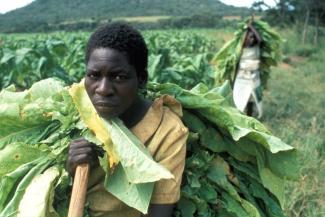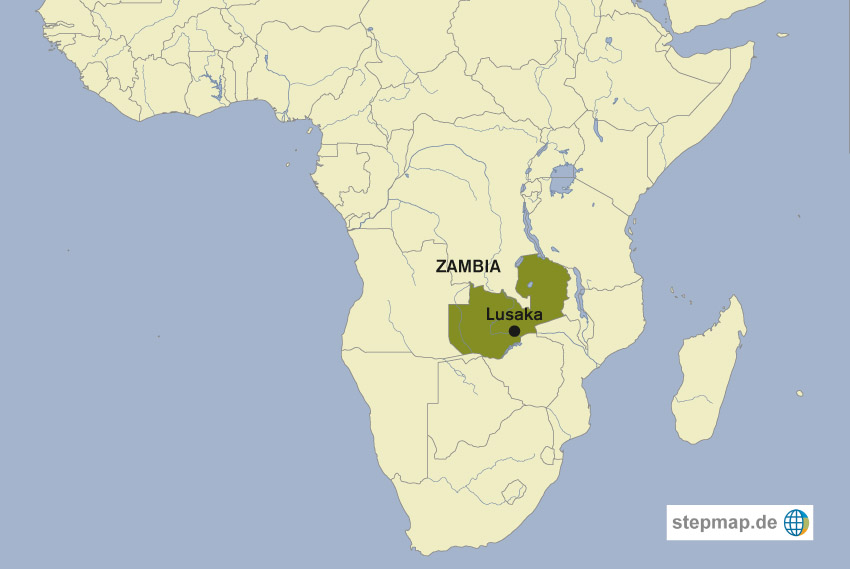Land reform
Zimbabwe’s waste land

In 2000, President Robert Mugabe turned Zimbabwe’s agriculture upside down. To end the legacy of colonialism, his government took land from white farmers and gave it to black Zimbabweans. In 15 years, more than 7 million hectares were reallocated. The government gave the plots mainly to smallholder farmers and to people with close ties to the regime.
Before the land reform, Zimbabwe was the bread basket of southern Africa. It exported wheat on a big scale. But today, the agricultural sector is struggling. Zimbabwe must currently import an annual 100,000 tons of maize and other food crops to feed its people. The main reason is that much of the reallocated land is not being utilised. Political scientist Phillan Zamchiya estimates only 40 % is currently being used for agricultural production. He is lecturer at the Universities of Oxford and Harare and a former head of the Crisis in Zimbabwe Coalition, a civil-society network.
As the scholar sees it, political cronies, who benefited from the reform, tend to use their land for recreational purposes rather than agriculture. He adds that small-scale farmers lack equipment, fertiliser and know-how. Many have no experience in farming.
Zamchiya also blames Mugabe’s style of leadership for the agricultural crisis. For many years, the government did not provide macroeconomic stability, but let corruption flourish.
Winners and losers
Nonetheless, the fast-track land reform was not a complete failure, argues Prosper Matondi. He is director of the think tank Ruzivo Trust in Harare and has been focussing on Zimbabwe’s agricultural challenges for more than 16 years.
Despite the challenges, Matondi told a conference held by the Friedrich Ebert Foundation in Bonn in May, Mugabe created a national model for smallholder farming and distributed land to about one million Zimbabweans. “The numbers show that most small-scale farmers now have better livelihoods than before,” he adds. However, the government has not dealt adequately with the big losers of the land reform. Neither the white farmers, nor the 300,000 farm workers, who lost their jobs, have been recompensated.
The reform missed another big opportunity moreover. It did not adequately consider women, even though they are “the backbone of Zimbabwe’s agriculture”, as Matondi says. 70 % of the women live in rural areas and half of them are working in agriculture. Yet the government gave only 18 % of the reallocated land to female farmers.
Matondi insists that rising poverty in Zimbabwe cannot be directly attributed to the land reform since poverty levels have been increasing continuously since the 1990s, the era of the structural adjustment programmes that were imposed by the World Bank and International Monetary Fund. However, Matondi admits that reshuffling Zimbabwe’s arable land resulted in many uncertainties: “There is still chaos and disorder when it comes to land administration, land rights and titles.” Agricultural policy has not been changed since 1999 and needs a serious overhaul.
One problem is that all newly allocated land remains state property. According to Matondi this puts farmers in a weak position as the government can take away their land anytime. Farmers do not know if their children will inherit the land they live on, so they shy away from long-term investments.
Corrupt system
A common thesis is that commercial farms would be the solution for Zimbabwe’s food and economic crisis. Matondi disagrees: “What made white commercial farmers successful before the fast-track land reform was their strong lobby and the massive support they received from the government.” If the state supported smallholder farmers in the same way and if small-scale farmers used their land fully, Zimbabwe would have enough food, he says.
Fellow Zimbabwean Zamchiya, however, is certain that the agrarian crisis is only a symptom of a bigger problem: “Most state-driven reforms are implemented along partisan lines and to maintain power structures” he says. Farmers who do not support the ruling party ZANU-PF are intimidated and often threatened and beaten up.
Theresa Krinninger














